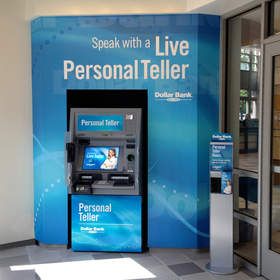Between religion, mythology and even in everyday expressions, we are warned against the perils of knowledge and the pursuit thereof. In the Christian Bible, Adam and Eve doomed mankind after consuming forbidden fruit that contained the knowledge of self-awareness. In Greek mythology, Zeus created the first woman, Pandora, and gifted her with a box that (unbeknownst to her) contained evil. Of course, that evil was unleashed into the world after Pandora opened the lid to look inside. We are reminded that “ignorance is bliss” and “curiosity killed the cat.” Yet, if we live in a culture where seeking answers is considered dangerous, why then do we rely so heavily on technology to replace mystery with knowledge?
Technology can be likened to a modern oracle: an omniscient, omnipotent force that the majority of us have at the disposal of our fingertips. With its educational, encyclopedic, research sites, the Internet can be leveraged as a point of reference. Social media not only connects us to others, it also acts as an extension of our identities – revealing to friends, family and strangers alike our location, age, background, marital status, interests and dislikes – all without the need for us to speak or meet. As long as there’s a GPS signal, we can find our way to just about any destination, often “blindly” by complacently obeying the directions we’re given instead of consciously navigating.
The scope of our individual intelligence has shifted with the advancement of technology. We haven’t become smarter, perhaps only more resourceful. That resourcefulness is achievable by access to technology. Even then, one is only as resourceful as their ability to properly use any given technology. In an article for Psychology Today, Tomas Chamorro-Premuzic outlined two components of intellect and how they are utilized: fluid and crystallized intelligence. Crystallized intelligence represents what we actually know (i.e.-information we can reference offhand from memory) which is dwindling as our fluid intelligence, or our ability to gather and process information (i.e.-when we use search engines to answer a question) has grown alongside technology.

As a teen in the late 90’s, when the Internet was just beginning to connect people, and the notion of social media was still a ways off, I used to truly pine for guys I had a crush on. Without technology, I took what was available, be it a brief conversation or a look, and filled in the gaps with my imagination. After falling for a co-worker at Toys ‘R Us, I took note of when he’d come into the store to pick up his paycheck. If I was scheduled to work that day, I would station myself close to the entrance of the store so I could strike up a conversation with him. The interaction would last all of 30 seconds to maybe a minute, but in the time leading up to that moment, I would feed off the wonder of what he was thinking, what he was up to, who he truly was. After he would leave, armed with that 30 seconds of further information, I’d analyze and reanalyze what was said and what it could mean.
It’s funny and embarrassing to look back on that time, but I do so with fondness. When we meet someone who interests us today, it takes little to no effort to find out seemingly everything about them due to the technological imprint we make. A friend recently mentioned that she had to explain to her daughters what a blind date was because this arrangement rarely occurs anymore. Even if someone wants to introduce us to a friend, all we have to do is view the matchmaker’s Facebook profile and scroll through his or her friends to locate the bachelor/ette they’d like to set you up with. By discovering so much before even meeting, are we taking away the chance to get to know one another face to face instead of face to Facebook? Although knowledge is power, is there such a thing as too much knowledge?
In his brilliant article for Wired magazine (that already dates back to the year 2000), computer scientist and co-founder of Sun Microsystems, Bill Joy, reflected on Why the Future Doesn’t Need Us. In the article, Joy commented on how technology has advanced our society’s wellbeing in fields such as medicine, while simultaneously advancing humanity’s demise with perpetually more sophisticated weaponry, warfare, hackers and the like. “Can we doubt that knowledge has become a weapon we wield against ourselves?” Joy asked.
This subject has been at the heart of exploration for years, in books such as Aldous Huxley’s Brave New World and George Orwell’s 1984 alongside philosophical works such as Jacques Ellul’s The Technological Society and dystopian films (many based on books) such as, 2001: A Space Odyssey, and A.I.. In each of these works, it is easy to see how the benefits of technology continued advancing until the point of evolving past human control, thus becoming too powerful to stop. As Bill Joy noted, “We [scientists] have long been driven by the overarching desire to know that is the nature of science’s quest, not stopping to notice that progress to power and more powerful technologies can take on a life of its own.”

Necco’s sense of curiosity tends to center around good deals, his next meal, and when his mom is going to stop writing to give him a cuddle.
The wheels (or should I say the 0’s and 1’s?) of technological advancement are in motion and have been for years. While extremists such as the Unabomber, Ted Kaczynski, resorted to violence in an effort to draw attention to, and protest of modern technology, others such as Joy and Ellul remind us that as humans with free will, we still have a choice, and can choose to use (or limit our use) of technology in socially responsible, non-violent ways. In the pursuit of knowledge, what we learn – whether it be about history, a location, others or even ourselves – isn’t always pleasant, or what we had hoped to find out. Nonetheless, with knowledge, we are able to move forward, either by accepting what we have learned or by determining that we would like to make a change. The alternative, the unknown, can be intriguing, but paralyzing.
Old-fashioned Challenge: Go out in the world and actively pursue knowledge, whether it be by attending lectures or meeting someone face to face instead of exchanging texts. Having concrete experiences can leave a lasting impression, which may just help to crystallize our intelligence and allow us to continue to be creatures of thought rather than creatures of Wi-Fi.
© Tia Gargiulo, 2015
Question: I’ve been kicking around the idea of unplugging from all portable technology for a day, but would love to have others participate and meet afterwards to compare experiences. Would that be of interest to anyone? Those outside the Seattle area could participate as individuals or as hosts for another city, if they’re so inclined. Leave a comment below or drop a line at: tiagargiulo@hotmail.com to let me know your thoughts. Depending on the response, I’ll come up with the particulars for when, how, etc.




